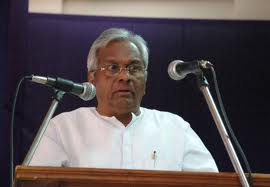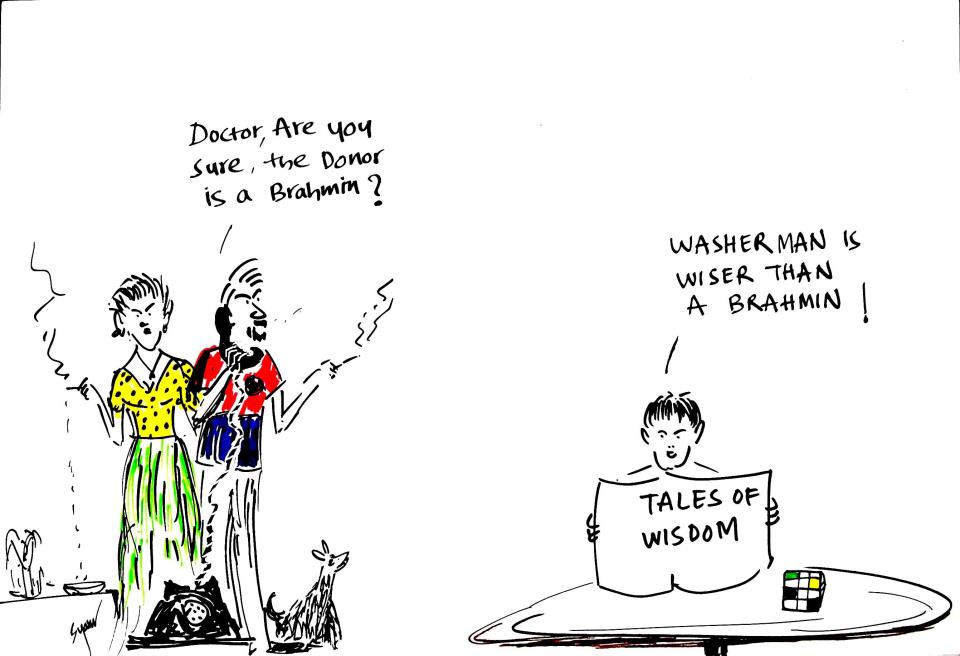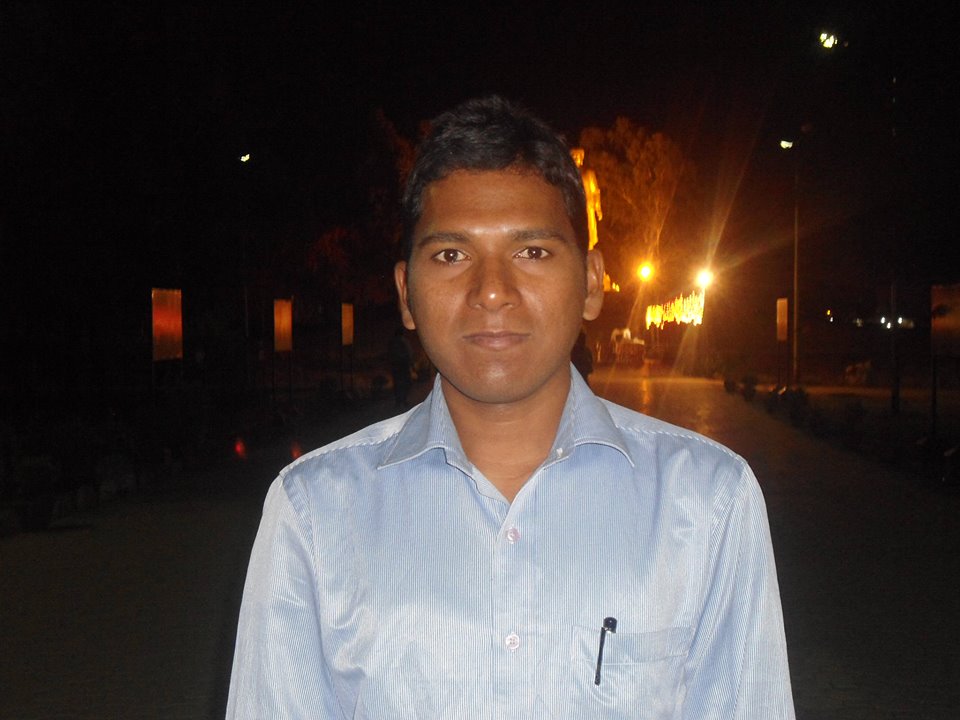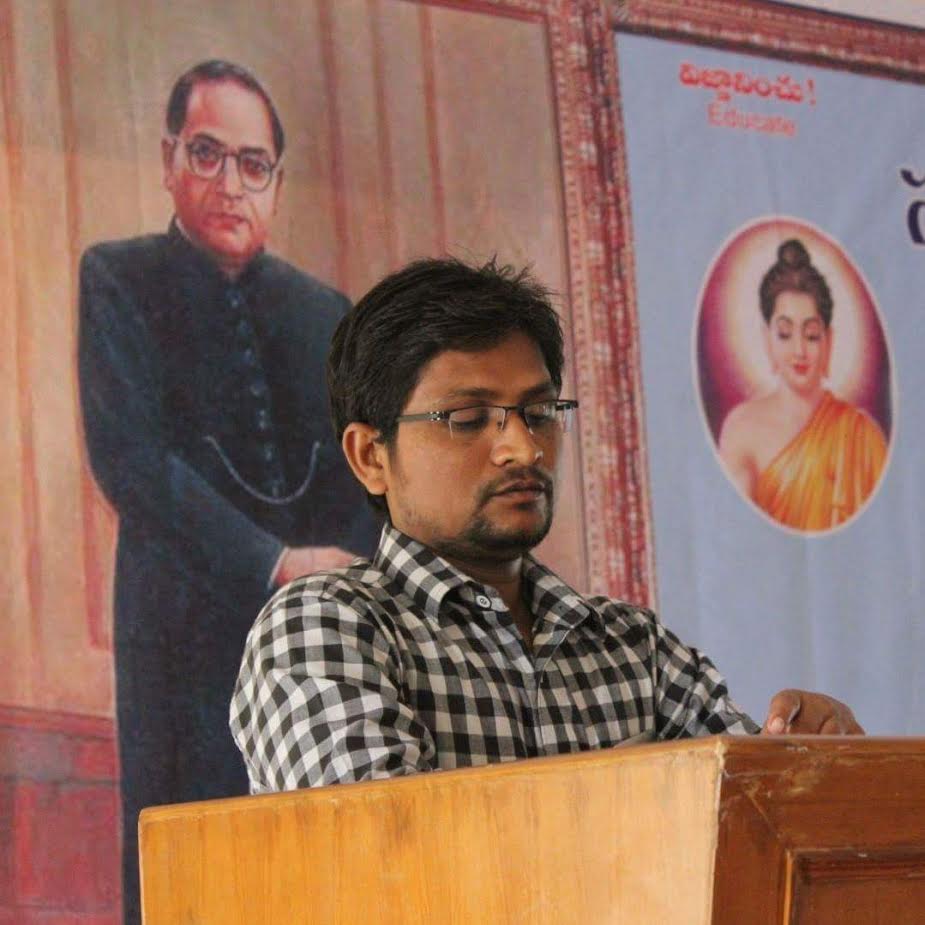(This is the second and final part of the paper ‘Interpretation of Cultural Identity and Caste Hegemony in Selected Prose Writing of V.T. Rajshekar‘. Please read the first part here.)
Grishma Manikrao Khobragade

Rajshekar indicates that once culture sanctifies the Brahmin as pure, the presence of the Brahmin is legitimized in all cultural institutions like religion, marriage, birth ceremony and the rituals related to death. He also argues that dominant Hindu culture degrades Dalits so systematically that even a rich Dalit feels inferior before a poor Brahmin. According to the writer, the poverty of the Untouchables in India is a byproduct of the cultural hegemony. He says “If the Untouchables are poor, it is the by-product of their cultural degradation of being classified as impure. As long as this purity and pollution notion is allowed to run riot how can there be human rights? “(1988:15). While analyzing the cultural context of India, he talks about how marriages and food habits in India are controlled by casteism. He explains how the people of upper caste create strong cultural barriers among the people:
Endogamy bans inter-caste marriage. Caste bans inter-dining, religious conversion and all other forms of intercourse making India a country of “meritless” people. The upper castes of India want us to “love the land”. But what is the use of loving the land without loving its people? (1988:16)
Rajshekar also interprets gender relations in Indian society as a result of the conspiracy of the upper caste. He indicates that scriptures and myths sponsored by Hinduism have relegated women to an inferior status. He explains how cultural texts which are alive in society work against the interest of women: The law of Manu strictly says that the woman has no place in the Hindu society. Before marriage she is under the custody of parents, after marriage under husband, and after becoming a widow under her children. (1988:18)
He gives Dalit interpretations of the Ramayana and he rereads it as a cultural document on the caste war in India. He considers Ravana as a great Dalit Hero and Ram as an icon of upper caste Hinduism. He proposes Dalit subversion of the annual ritual of the burning Ravana:
Ravana, a great Dalit hero, is being burnt every year at the end of Ram Lila festival. Dalits have tolerated it. But when Dr Babasaheb Ambedkar exposed the sexual exploits of Rama and Krishna, his book (Riddles in Hinduism) was burnt and the Govt., forced to delete the annexure to the book published by the Maharashtra Government itself. (1988:19)
Rajshekar considers casteism, intolerance, brahminism and inequality as the features of Indian dominant culture which are then circulated in the society with the help of TV serials such as the Ramayana, print media and educational system. He considers this process in culture as Sanskritization and he explains:
The air that you breathe, the water that you drink, the paper that you read, the book you study in classes, the cinema and TV that you see, the god that you worship everything is engaged in spreading this “dominant culture. (1988:23)
He aligns Hinduism with Aryanism. He argues that Aryan invaders who brought Hinduism or Vedic dharma have invaded India culturally, denying the cultural existence of the Untouchables. He argues:
The Untouchables have their own cultural identity. They are worshipers of nature. They had their own glorious cultural heritage. As the founders of the Indus Valley Civilization, they can be ranked as the pioneers of world civilization. (1988:24)
However Rajshekar is also mindful of the resistive counter culture that operates in rural India. He indicates that no amount of cultural hegemony and no strategies of dominant culture can truly wipe out the multiculturalism in India which resists the totalizing effect of Brahminical culture. He observes:
Though the Aryan invasion is today over 3000 years old still the invaders could not completely destroy our distinct cultural identity. In every village, our people stick to their life style, their own language, their own shrines, their own traditions, and their own culture. They have their own temples and priests and deities. Their dress, food and culture and tradition are even today separate. (1988:25)
The major argument that Rajshekar puts forward in Aggression on Indian Culture, is that Hinduism and its dominant culture combine to mount a cultural aggression. However, he points out that tribals have already started their cultural onslaught by initiating anti-Aryan movements. He also criticizes the press and other media that have become the custodians of dominant culture. He says:
The Aryan “dominant culture” is losing its battle. That is why it is taking a more and more violent turn and using the state itself to suppress the “sons of the soil”. The country’s “national press” is working as the watchdog of this “dominant culture”. So also its law courts, bureaucrats. The police and military are being increasingly used to destroy any individual or movement that will work against this “dominant culture. (1988:25)
Rajshekar goes on to attack the cultural policies of upper caste right-wing political parties of India. He argues that the concept of Hindu Rashtra propagated by such parties is extremely dangerous for the multilingual, multi-religious and multi-ethnic fabric of Indian culture. He considers culture as a site wherein various native religious practices are manifested. He analyses the history of Indian culture to show how the privileged Aryan notion of religion has wiped out other religious practices of Indian culture. He observes:
In the course of the last several centuries the Brahmins have heavily borrowed from the myriad indigenous religions, cultures, traditions. Even the different deities of the natives were absorbed and converted into Hindu gods. That is how the Hindus put the total number of their gods at 330 millions. Brahmins originally had only two gods- Brahma and Vishnu. Even Ishwara was a pre-Aryan god of the original inhabitants of India. (1988:27)
Rajshekar also looks closely at the hegemony of Brahminism and how it was detrimental for the native religious practices. He talks at length about the discriminatory attitude of Hinduism towards the different religious traditions that exist in India:
Even as the Brahmins took over the millions of deities of the native Indians and included them in the pantheon of their Hindu gods, they went on ridiculing them, denigrating them. They called the natives as followers of “little traditions” while styling themselves as followers of the ‘dominant tradition’ (1988: 28).
Further, Rajshekar points out how certain native belief systems including the worship of ancestors were looked down upon by the dominant culture of Hinduism by branding them as forms of devil worship. He considers the example of Yaksahgana of Karnataka as being totally appropriated by the upper caste Hindus to destroy its native flavour. He explains:
A similar cultural aggression played havoc on a very important cultural expression of South Kanara district, namely Yakshagana. Yakshas are the bodyguards of Jain Thirthankars. How did the pouranic cock and bull stories come to take over an essentially native dance-drama? Today, Yakshagana has become a total monopoly of Brahmins and they are using this most popular village dance-drama cultural campaign to hinduise the native non-Hindu SC/ST/BCs. (1988:29)
He reminds the readers of a time when India had different religious practices of native origin. He also explains how such practices were maligned by Brahmins, stealing the natives of their Gods and Goddesses. Rajshekar comments on the strategies of Brahminical cultural overlordship:
The culture of the original inhabitants, now called “low caster”, their form of worship, their offering to their deities are all entirely different from that of the Brahmins. The native people are all meat eaters and they also consume alcohol .What they eat and drink (meat and alcohol) are also offered to their deities which are mostly their own ancestors .That is how the natives of India are mostly ancestor worshippers, meat-eaters and alcohol-drinkers. They lead simple life. They are not cunning and crafty. The woman plays a predominant role in the life of natives whereas the Aryan Brahminical races are anti-woman. (1988:29)
Culture, according to V. T. Rajshekar, is a product of media. He argues that upper caste Hindus have created a kind of cultural Nazism by taking over the media completely. He explains:
“Through the many newspapers and journals the upper castes own, they are able to malign the Muslims and Christians and tarnish their image so that the innocent natives are prejudiced against these two egalitarian religions.” (1988:31)
Language is also a significant element of culture. A dominant language exercises a cultural hegemony over other minor languages. He explores this theory of linguistic domination. He reminds readers about how Hindi and Devanagari script have obliterated many native languages. He explains this linguistic hegemony in Indian society:
Though UP, Bihar, Haryana, Rajasthan, Himachal Pradesh, Madhya Pradesh had several languages like Ardha-Magadi, Khadiboli, Mundari, Hariyanvi, Brijbhasha, Rajasthani etc., all of them have been swallowed and the area is now called “Hindi belt”. (1988:36)
 Ethnicity is another aspect of culture. It is also a significant component of cultural identity of its community. Stuart Hall explains the concept of cultural identity in terms of the collective experiences of the past. He considers memory, desires and narratives as the agencies of cultural identity. This paradigm can be applied in the context of Aggression on Indian Culture by Rajshekar who speaks about the significance of history in the context of the identity of Dalits in India. He implores Dalits to reclaim their ethnic identity by revisiting history through memory and narratives. Rajshekar also exposes the cultural politics of Brahminism that has suppressed the ethnic identity of the tribals and lower caste Hindu. He argues:
Ethnicity is another aspect of culture. It is also a significant component of cultural identity of its community. Stuart Hall explains the concept of cultural identity in terms of the collective experiences of the past. He considers memory, desires and narratives as the agencies of cultural identity. This paradigm can be applied in the context of Aggression on Indian Culture by Rajshekar who speaks about the significance of history in the context of the identity of Dalits in India. He implores Dalits to reclaim their ethnic identity by revisiting history through memory and narratives. Rajshekar also exposes the cultural politics of Brahminism that has suppressed the ethnic identity of the tribals and lower caste Hindu. He argues:
The different ethnic identities of India, comprising different castes and tribes, were gradually pushed into this pyramid-shaped caste order and the Brahmin placed himself at the top and called himself the most superior, sacred and the very god on earth (Bhoodevatas) (1988:38)
According to Rajshekar an attack on the ethnic identity of Dalits is a powerful weapon that Aryan Brahmincal culture has. He also indicates that Brahminism, by attacking and appropriating the cultural identity of Dalits, has also neutralized the political dimension of the caste based identity of Dalits.
History is not merely a record of the events of the past, new historicists like Stephen Greenblatt and Clifford Geertz consider history as a cultural material. They also look at history as a narrative and as a form of representation that privileges the interest of certain groups. Thus, in New Historicism, history marks a point of intersection between culture and politics. Rajshekar’s view on history is very compatible with the new historicist views. Rajshekar says that Indian historians have been favouring Aryan Brahminical cultural invasions of Dalits. He explains how history has been hijacked by the dominant culture in India:
But the Indian historians, who happened to be mostly Brahmins and other Aryans, did not record these events as a battle between the two cultures and civilizations. Intellectual dishonesty is the chief Aryan trait. (1988:42)
Myths are considered as culture-bearers of a society. However, myths in human societies are usually appropriated by the dominant cultural groups. Rajshekar explains how upper caste Hindus have naturalized Gods and mythical figures who were not Brahmins into Brahminism in order to fortify Brahmins. He explains:
Both Rama and Krishna were not Brahmins. Rama was a kshatriya. Krishna was a Backward Caste Yadava. Yet both the Ramayana and Mahabharata relate the stories that resulted in the defeat of the Kshatriya race. The Brahmins established total grip over not only other Aryan races but even on the indigenous peoples. After vanquishing the Kshatriya and the powerful Yadava race, which had wholesale embraced Buddhism, the vaidiks promoted both Rama and Krishna to godhood. (1988:44)
Rajshekar’s main argument in this work is that Hinduism is not just a form of religious hegemony but also cultural overlordship that has crippled the language, literature, folk art, religion and history of Dalits.

V.T. Rajshekar being honoured with the ‘International Award-2005’ of London Institute of South Asia (LISA), for his book, ‘Caste — A Nation Within the Nation’.
~
Primary Sources
Rajshekar V.T., Ambedkar and His Conversion. Bangalore: Dalit Sahitya Academy, 1983.
Rajshekar V.T., Dalits: The Black Untouchables of India. Clarity Press, Inc. Atlanta, 1987.
Rajshekar V.T., Aggression on Indian Culture. Bangalore: Dalit Sahitya Academy, 2001.
Secondary Sources
Limbale, Sharankumar.Towards an Aesthetic of Dalit Literature: History, Controversies and Considerations. Trans. Alok Mukherjee. New Delhi: Orient Blackswan, 2007.
Dr.Ambedkar, B.R: Annihilation of Caste. Nagpur, Samata Prakashan, 1944
Ambedkar, B.R.: Mr.Gandhi and the Emancipation of the Untouchables, Jalandhar Bheem Patrika Publications,1943.
Keer Dhananjay, Ambedkar: Life And Mission. Mumbai: Popular Prakashan, 2002.
Ambedkar, B.R.: The Buddha and His Dhamma. Nagpur Buddha Bhumi Prakashan, 2011
Ambedkar, B.R.: Who were the Shudras? Nagpur Kaushalya Prakashan, edition 2003.
Ambedkar, B.R.: Caste in India. Mumbai Pratap Prakashan, 1996.
~~~
Grishma Manikrao Khobragade is Assistant Professor, Dept of English, Birla College, Kalyan. email: khobragade-dot-grishma-at-yahoo-dot-com
[Images courtesy: the internet]










